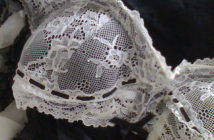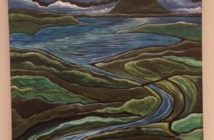Escaping from Te Puna and beating the well-known path of SH1 to Wellington and back again, your TPC was drawn to ponder the road art in sculptures over the 700 or so km. Criteria for attention were:
-
road-visibility (could you actually see the piece without leaving the highway?)
-
pull-power (would you slow down for it?)
-
grace, charm, artistic force (having slowed, do you care?)
-
place in space (does it reward an actual pause in the journey?)
State Highway 1 starts very promisingly at the junction of a Wellington suburb (Miramar) and the Wellington airport. Hard for them but fun for us, as Paul Dibble illustrates, fast and furious, with his bronze Down Under Lady pointing to the other side of the world, although it’s hard to see this without risking vehicle (no easy place to stop), life and limb (no easy place to cross). Your peri-urban, if not actually rustic, critic is indebted to the courage of blogger Wellingtonista http://wellingtonista.com/2011/03/14/notional-significance-takeoff/ for supplying the detail. But, even from a moving car, you get the Lady’s visibly energetic grace. Of course, you slow down (it’s a roundabout!). Grace, charm and force are all to the fore: she’s gorgeous. And yes, as a traffic-calming device and a reward to those who have arrived or are setting out, she’s well placed for us road trippers. Roundabouts will always tempt the artist seeking a natural focus point and a compulsory 360⁰ view – but here, the elegant balance between place and time (there’s limited opportunity to stand and stare), requires a clean line and a sense of potential, even if we take several go-rounds to fully appreciate the whole. Right at the start/finish line of North Island SH1, this sculpture puts us on notice.
Next on the road is the Virgin at Paraparaumu. She’s a lot less fun, but then it would seem she’s been designed specifically for visibility. Our Lady of Lourdes, 14m higher than her 75m site, shows few external details from the road, although not many of us could resist the tales of community effort and the internal workings of Martin Roestenburg’s design. She’s more obvious from the north, but, coming from the south, would you u-turn for a closer view than in the rear-vision mirror? Her floating, ephemeral quality is, the TPC thinks, better served by a distant mirror than the up-close reality. Let it ride.
It’s a long road, with many turnings, before the next sculpture presents. The Hunterville Huntaway, somewhat larger than lifesize, sets up a silent racket at every passer-by. He’s pretty compelling, and the TPC smiles a “good dog!” message at him on every journey: but I’ve never stopped to pat his head (or his paw, which is, I rather think, all I could reach on his stony plinth). Reading up about this statue, it is noteworthy that no credit is given to its provenance, or its maker, rather like the dog-type (it’s not a breed) itself. Go to http://woolshed1.blogspot.co.nz/2010/01/new-zealand-farm-working-dogs-nz.html for a sense of what being a huntaway is all about.
I plan to stop next time. And pat, or even polish, his paw. It would be nice to think that SH1 travellers show that, at Hunterville, they can make a point of breaking their journey to say gidday to The Dog. After that, it’s cool runnings to Taihape, where a superb corrugated iron gumboot , thrown by some Almighty Johnson, demonstrates the skill, observational wit, and profound sense of reality of sculptor Geoff Thompson. No amount of patting will ever polish this artefact. But, every time I drive by, I look for another boot possibly flying towards me. I see it. I slow. I care that it’s there. I love that it’s in Taihape, where even the Lotto-shop sign evokes a gumboot shape. Good on you, you gumboot town.
 But it’s a long time between drinks. Not until Tokoroa do I see another roadside artwork worthy of even a pause to think. Perhaps this is because the magnificent play of light and shadow on the mountains and lake take the attention, and supply enough monuments and moments, for anyone travelling at or below the speed limit. They keep you thinking, though: and unless you know, coming into Tokoroa, you might scoot past Nathan Hull’s Taniwha, a wire sculpture loosely and lightly draped around a pole. It pulls on a number of strings: water is fluid, but powerful; the land is solid, but susceptible; the taniwha has a European dragon’s head but its body’s entwining series of curves are unmistakably Maori. Which will prevail? Te tangata or te whenua?
But it’s a long time between drinks. Not until Tokoroa do I see another roadside artwork worthy of even a pause to think. Perhaps this is because the magnificent play of light and shadow on the mountains and lake take the attention, and supply enough monuments and moments, for anyone travelling at or below the speed limit. They keep you thinking, though: and unless you know, coming into Tokoroa, you might scoot past Nathan Hull’s Taniwha, a wire sculpture loosely and lightly draped around a pole. It pulls on a number of strings: water is fluid, but powerful; the land is solid, but susceptible; the taniwha has a European dragon’s head but its body’s entwining series of curves are unmistakably Maori. Which will prevail? Te tangata or te whenua?
An answer of sorts is at the other end of town – a work by Roger Thompson “Talking Poles” 2006. Here your ideas of landscape are played with, in the form of an empty frame, enclosing, in some fake ‘picture’, a landscape left to the chance glance of the viewer. This one is definitely worth stopping for. In fact, you won’t get it until you do stop. (The TPC hadn’t, and didn’t, until now.) The frame is The Thing. Its details play with you: mini-landscapes, references and symbols, a knowing eye, some names, dates and times. More fun, most serious, it says: what you can see on the road is only one angle. Slow down. Occasionally, show you notice there’s a force greater than travelling at 100kph. Even, stop. Walk, rather than drive, around. Risk the crossing at the roundabout. Or look through , and at, an empty ‘frame’.
 The Te Puna Correspondent. The Te Puna Correspondent,
The Te Puna Correspondent. The Te Puna Correspondent,
Your TPC is a rurally living, lifetime Tauranga resident. She has an eclectic cultural background She is a continuing participant, supporter and observer of all forms of the creative arts and commuity activities. Much travelled both nationally and internationally, the ARTbop contributions of Your TPC can be acerbic, witty and insightful. Their publication is looked forward to by an increasing readership following. Her alter ego Beth Bowden can be seen as a lead conversationalist on The ARTbopSHOW.
Your TPC can be contacted at info@artbop.co.nz




